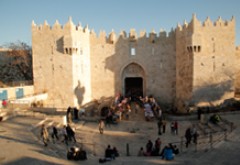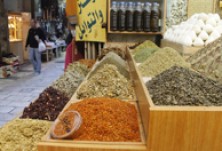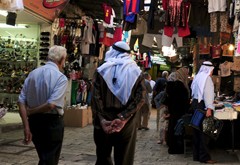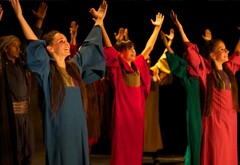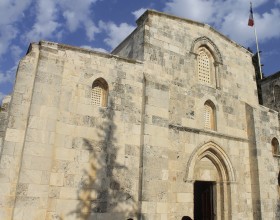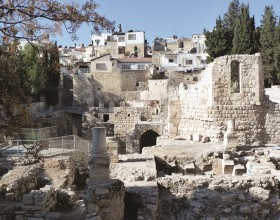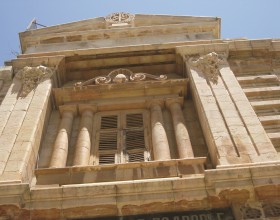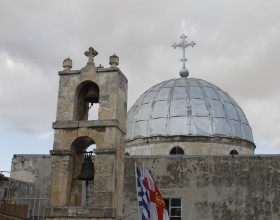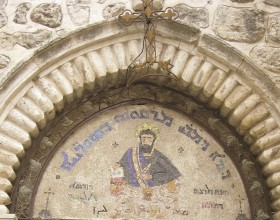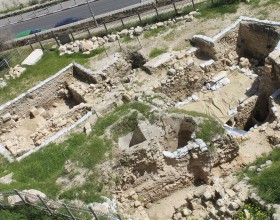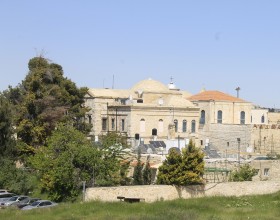Paths And Trails
Via Dolorosa and Churches
Ever since Jesus Christ walked this road of suffering, carrying His cross on His back, it has been transformed into a holy trail walked by millions of believers throughout the centuries. This road continues to recall this central event in the Christian faith, with churches, monasteries, and chapels extending along its length.
Trail’s Nature and Stations
This trail focuses on churches, especially the Holy Sepulcher, starting from Bab al-Asbat (Lions Gate) east of the Old City, from St. Anne’s Church (al-Salahiyya School) through Via Dolorosa, and ending in the Armenian Monastery near Bab al-Khalil (Jaffa Gate). It crosses the Old City from east, through south, to west. The trail is easy and can be completed in three to four hours, in the morning or afternoon, yet it is rich with events and miracles performed by Jesus Christ, as documented in Christian scripture, and reflects the culture of several Christian denominations in Jerusalem. It is important to remain quiet and respectful inside the churches and to observe proper attire requirements, opening and closing hours and instructions for visitors.
Trail’s Stations
1- St. Anne’s Church (al-Salahiyya School)
2- Via Dolorosa Stations 1-9
3- The Holy Sepulcher and Stations 10-14
4- St. Alexander Russian Church
5- John the Baptist Church
6- St. Mark’s Church
7- Nea Church
8- St. Jacob Armenian Cathedral
Introduction
Jerusalem has a large number of important churches directly connected to miracles performed by Jesus Christ in the city. Churches and monasteries are not only in the Old City but in the areas around it, particularly the Mount of Olives (see the Mount of Olives Trail). The Byzantine period witnessed an active architectural movement, represented mainly in building a number of churches, monasteries, and public buildings, after Christianity was adopted as the official religion of the Byzantine state in the middle of the 4th century, and continued until the Arab Islamic conquest in 638 AD (15 H). However, little remains intact of these churches except for the Church of the Holy Sepulcher, and what can be traced to the Byzantine era are only a few, small pieces, because these Byzantine churches were affected by the hostility between the Byzantine state and the Sassanid Persian Empire, culminating in the Persian invasion in 614 AD, when churches, monasteries, and buildings were destroyed. After the City was reclaimed and the Holy Cross returned to Jerusalem in 629 AD, a monk named Modestus took up the mission of rebuilding these churches and buildings, but the resources available to him were too limited and the mission too large, and many churches remained in shambles.
With the arrival of the Islamic conquest in 638 AD (15 H), relations between Muslims and ahl al-Kitab (Christians) were regulated in a peaceful agreement known as al-’Uhda al-Umariyya (the Guardianship of Caliph Umar Ibn al-Khattab), which permitted the renovation of old churches but most likely prohibited the building of new ones. During the Crusaders/Franks era (1099 - 1187 AD / 492 - 583 H), the city witnessed a period of active construction, renovation and rebuilding of many sites. A timeline of construction of churches and monasteries in Jerusalem and Palestine reveals three main stages: the Byzantine establishment era, the Franks era, when sites and remains of old churches were renovated and new churches were built, and the post 1840 AD era, when modern churches and monasteries were built on Byzantine and Franks sites. It is evident that many such churches and convents show signs of these three eras, albeit to varying degrees.

